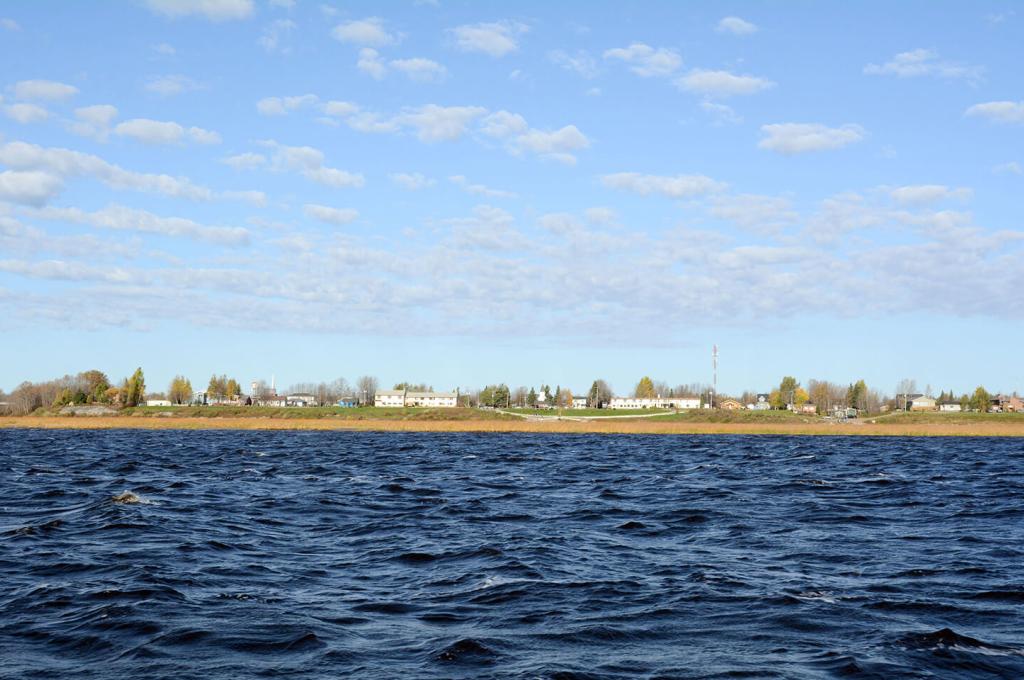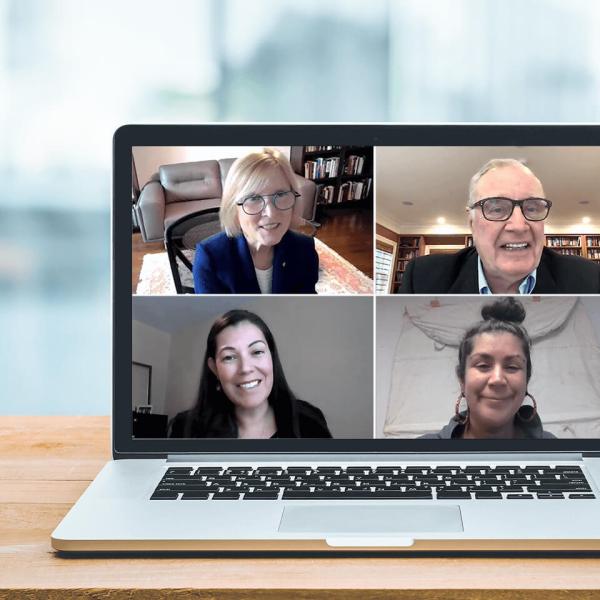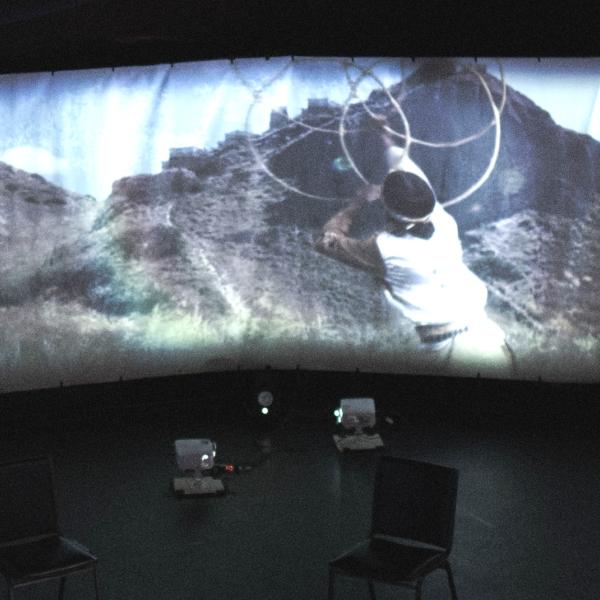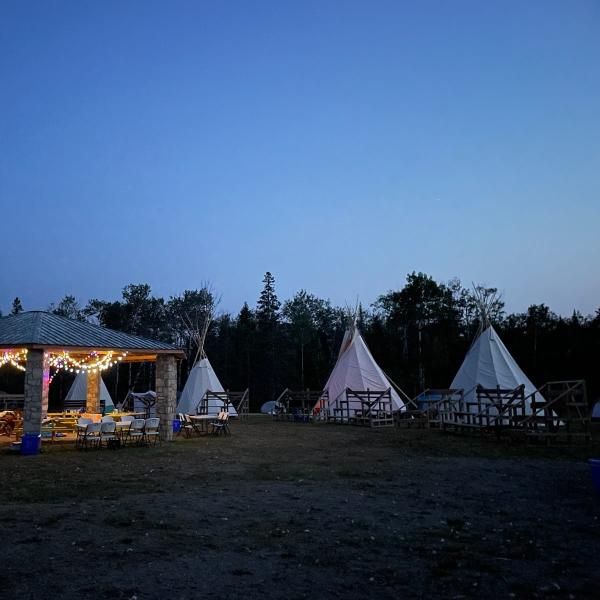Starting this summer, researcher Damien Lee will be spending time in First Nations across Ontario to engage communities in narrating their relationships with land-based governance and traditional Indigenous political roles. Lee will combine memes with Biskaabiiyang (bish-kaa-bee-yung) methodology to do so.
An Anishinaabeg word, Biskaabiiyang is about rebuilding — a resurgence in the way Indigenous Peoples used to live, work and conduct politics outside of colonial violence. “Gidigaa Migizi defined Biskaabiiyang as ‘popping into bloom like a flower in the spring,’” says Lee. “The translation in English is, ‘returning to ourselves.’”
A celebrated Knowledge Keeper, hunter, Elder, and former Chief of Mississauga’s Curve Lake First Nation, Gidigaa Migizi (Doug Williams) passed away in July 2022. Before his passing, he spoke with Lee many times about the meaning of Biskaabiiyang.
Lee is a Canada Research Chair in Biskaabiiyang and Indigenous Political Resurgence at Toronto Metropolitan University. He is a white man adopted and claimed as a baby by the Anishinaabe community of Fort William, and he sees the colonial violence embedded in the rejection of traditional forms of Indigenous governance.
Indigenous politics are more than culture
Birthing, language and land-based practices have long shaped inherent political structures within Indigenous communities. Midwives, Knowledge Keepers and hunters have built complex political structures since time immemorial, and these positions were held by women, Two Spirit and trans folx (folx is an alternative spelling of “folks” used to signal inclusion of marginalized groups). Colonial systems have not only politically defanged these practices by defining them as “cultural rituals,” but they have also marginalized community members who once held specific political positions and influence related to their identity.
How will these communities manage internal politics after they’ve refused colonialism? How will Indigenous Peoples rebuild clan-based governance while understanding knowledge gaps left in the wake of genocide? Lee’s research project aims to find out.
“In terms of [identity], a big part of how I think about Anishinaabe sovereignty and governance research today is based on [phasing out] hetero patriarchy and homophobia,” says Lee. “To make clear the roles of Indigenous women, Two Spirit, and trans Anishinaabe political leaders — as thought leaders and individuals who deserve deference.”
Pursuing tradition through modern technology
Lee will be working alongside Moose Cree First Nation and their youth on the shores of James Bay. Natasha Martin is Acting Director of Nation Rebuilding at Moose Cree’s Mushkegowuk Council where she provides support and assistance to seven communities along the James Bay Coast down to Sault Ste. Marie. She is excited to see how Lee’s research will affect their youth.
“[Our youth] was one demographic I felt we couldn’t capture and get involved with governance. How do we do this?” she asks. “That’s where Dr. Lee comes in.”
Lee will use a CFI-funded, mobile qualitative research lab to work with community members to develop memes and other audio-visual content. The content will then be used by Nations to educate generations of youth on the importance of traditional forms of governance.
“The mobile lab is a motorhome — retrofitted into an audio-visual lab with high-tech equipment and technology,” says Lee. “The idea is to park this rig in communities and collectively explore the topics of relationships, Treaty and land-based governance.”
Although Lee doesn’t consider himself a creative person, he is drawn to how useful memes and Indigenous TikTok have become. Indigenous meme-makers are changing the face of social media by creating funny, yet astute content — distilling complex topics for an audience often unaware of Indigenous issues.
“I place a lot of value on memes because I can easily put a room of high-school students to sleep by talking,” jokes Lee. “But if I get youth who’ve come up with some kick-ass memes about Treaty — I’m easily outdone, and I will step back and become part of the process.”
The virtues of Biskaabiiyang — rebuilding, fostering and nurturing traditional ways of life
Indigenous political resurgence is a divisive topic across this country — from reclaiming child welfare services to navigating internal governance — but Indigenous communities and organizations are breaking away from provincial and federal colonialism.
Martin hopes Lee’s research can aid in the process of reclaiming the natural laws and ways of not just the Anishinaabeg but the nēhiyawak (Cree People) as well.
“We’re going back to the natural ways of our People,” she says. “Moose Cree is celebrating 350 years as a fort — that’s how far back that colonial imprint is with us. It’s a struggle to peel back all these layers and find out who we are ... we’re working with Anishinaabeg Nations to get that back.”
“There’s something happening with communities I’m working with,” says Lee. “They are disengaging from regional, territorial organizations that have presented themselves as having responsibility for governing [Indigenous] Territory. Nations are saying, ‘we are the Treaty holders, not any third party, middleman organization that gets us to the Crown — we are disengaging ... and reasserting ourselves as the primary party of these relationships.’”
Investing in Indigenous communities
Lee’s investment in Biskaabiiyang research is personal. As a partner and collaborator, he wants his work to show how Indigenous Peoples have the power and authority to lead and govern according to their own systems. Circling back to the Biskaabiiyang theme of returning to ourselves, he spoke about why he became a researcher in the first place — his grandmother.
“When I was a teenager, my grandmother told me a story about drawing attention to industrial waste on the [Fort William] reserve,” says Lee. “She was raising concerns about trees dying, then translating it into activist research. I was influenced by that because it wasn’t coming from the Band Office — it was a woman on the rez coordinating with other women about the health of the community ... investment [means] showing up and doing everything you can. That’s ultimately why I show up.”





